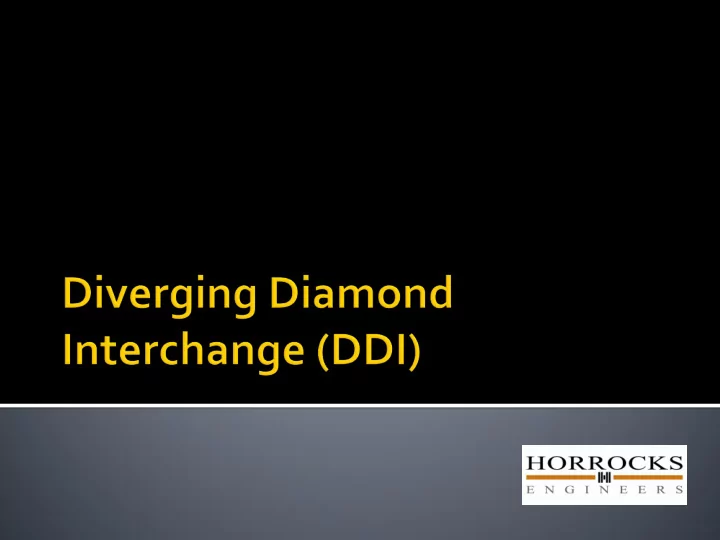

What is a DDI Recommended Practices Traffic Operations Analysis Geometric Design FHWA Review Conclusions & Lessons Learned
It’s not about you, it’s about the public
Developed by Access Utah County (AUC), I-15 CORE and the TOC Reviewed by UDOT Technical Committee For DDI feasibility on other projects
Main goal is to reduce delay: • Accommodate the left turn movements • Reduce the number of signal phases Only two signal phases are required, compared with 3 for a SPUI, or 4 with a diamond
Operational Failure when: A + B > 1900 vph
Operational Failure when: A + B > 1900 vph A + C > 1900 vph
Operational Failure when: A + B > 1900 vph A + C > 1900 vph B + C > 1900 vph
Operational Failure when: A + B > 1900 vph A + C > 1900 vph B + C > 1900 vph A + B + C > 2100 vph
Operational Failure when: A + B > 1900 vph A + C > 1900 vph B + C > 1900 vph A + B + C > 2100 vph Transition from LOS D to LOS F is very short . For this reason, UDOT defines LOS C as a minimum for acceptable operation.
Considerations: Weaving and merging Signal timing Driver behavior Intersection spacing Requires use of micro-simulation software UDOT requires use of VISSIM (PTV America) for analysis
Considerations: Traffic & Pedestrian Volumes Multi-Lane Turning Movements Merging & Weaving Operations within the Interchange Non-traditional Signal Warrant Analysis
Proximity of side streets, railroads, etc. Accommodation of pedestrians Existing geometric constraints in retrofit projects
Ramp terminal separation distance Crossover intersection layout and grading Signing and Striping Lane and Shoulder Widths Glare Reduction Roadway Cross-Section
To provide for queue storage and weaving space, crossover intersections should be spaced 850’ apart, with adjacent signalized intersections 1000’ from the crossover intersections. Right-in/Right-out access points may be placed according to the UDOT Access Management rules. Placement of accesses closer than 1000’ should be analyzed using VISSIM to determine potential operational effects.
Design speed through the crossover is reduced at least 10 mph, with a minimum speed through the curves of 25 mph. Utilize reverse curves without tangents to minimize length of crossover zones.
Placement of glare screen is specific to each DDI design, and may affect horizontal alignments. Line-of-sight calculations should be used. Additional study required to identify appropriate design parameters.
Shoulder widths should NOT be reduced across structure Lane widths should be at least 12 feet Turning templates for side by side WB-67 or other appropriate design vehicle should be applied
500 East, American Fork Why a DDI Crossover geometry & glare reduction Side street & ramp terminal separation
SR-92, Lehi Why a DDI Crossover geometry & glare reduction Side street & ramp terminal separation
Access Justification Report (AJR) Used by FHWA for all modifications to the interstate system. The AJR is not a substitute for the NEPA process, and the NEPA process does not eliminate the need for a AJR document. Addresses the eight “policy points” defined by FHWA as a type of warrants process.
When compared with SPUI or Diamond interchanges: DISADVANTAGES ADVANTAGES Contrary to driver expectation Higher left-turn capacity Operation sensitive to signal and No exclusive left-turn lanes street spacing Smaller structures Rapid transition from LOS D to LOS F Two-phase signal provides flexibility in timing ROW impacts at crossover intersections Smaller ROW footprint at the interchange Integration of pedestrian traffic
Design/Build contractors may submit the DDI interchange type as an alternate concept; RFP should be written to address the possibility. Operational analysis of a DDI requires specific software and requires more review time. Retrofit of existing structures may extend the operational life of the interchange for much less than reconstruction.
Thank you for your time.
Recommend
More recommend